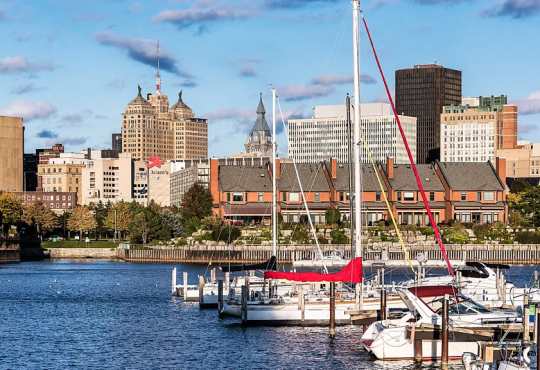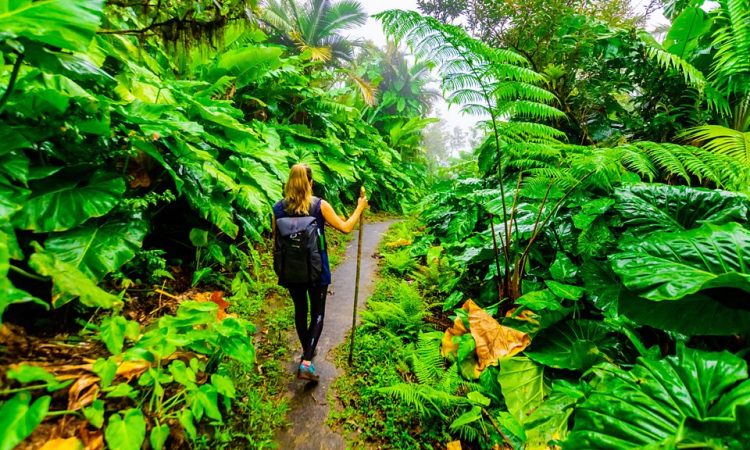
With huge numbers of travellers now seeking to travel more lightly and mindfully, these destinations are making sustainable travel easier this year.
Travellers in 2024 don’t need convincing that they have an important role to play in addressing the climate crisis. This awareness is reflected in an ever-increasing array of studies finding that more than three-quarters of global travellers want to travel more sustainably over the coming year, and that 90% of consumers look for sustainable options when travelling. With other sustainable tourism studies finding that an intention-behaviour gap remains, destinations investing in sustainability – in the tourism sector and beyond – can help to bridge it. Mindful travel to places recovering from unrest or disaster, meanwhile, can also help to support a more sustainable future for these destinations.
From destinations carving out innovative green spaces to places ready to welcome back tourists in the wake of tragedy, here are 10 destinations welcoming sustainable travellers in 2024.
1. Valencia, Spain
Each year, the European Green Capital Award is given to a city with an established and ongoing commitment to improve the environment and quality of life for residents and visitors. This year’s recipient was Valencia. Currently working towards generating 100% of its electricity from renewable sources by 2025, the Mediterranean city prides itself on its green spaces, with 500 hectares to explore – including a suite of new urban parks such as its Parque Central, which unites neighbourhoods previously divided by a railway that has since been relocated below ground. This city’s green spaces also encompass the Huerta – 120 sq km of produce farms that supply local markets and restaurants, thereby reducing the carbon cost of dining out and self-catering.
With improved mass transit services and pedestrian spaces making it easier to get around Valencia, the relatively flat city also offers 200km of bike lanes. Visitors can even cycle (or take public transport) to two national parks fringing the city: the bird-filled Parque Natural de l’Albufera, and Turia Natural Park, which is laced with trails and dotted with natural pools.
2. High Atlas Mountains and Marrakesh, Morocco
The earthquake that struck central Morocco in September 2023 caused the deaths of more than 2,900 people and the complete or partial destruction of 50,000 homes – most of these near the 6.8-magnitude quake’s epicentre in the High Atlas Mountains near Marrakech.
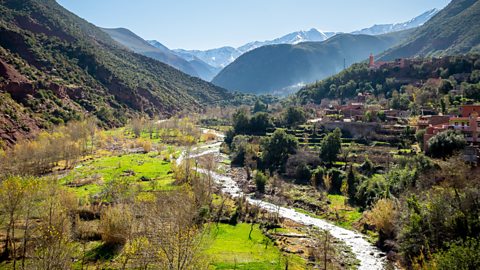
While Morocco’s tourism industry has proven to be resilient in the face of disaster, with record tourism arrivals in 2023, hotels in largely unscathed Marrakech have reported a drop in bookings, while artisans behind the workshops damaged in Marrakech’s old medina are still waiting for aid. All of the city’s main attractions, including the El Badi and Bahai palaces, Secret Garden and the Saadian Tombs, have reopened since the earthquake, and while some areas of the old medina remain closed, its spice-scented alleys are as atmospheric as ever.
Although it’s still too early to revisit some parts of the snow-capped High Atlas Mountains as communities rebuild, Abercrombie & Kent is among a raft of tourism operators helping to support the region’s recovery by returning to less-affected areas such as the Ourika Valley, a popular trekking destination. Intrepid Travel has launched four new trips to Morocco for 2024, including a venture through the Happy Valley, also known as the Ait Bougmez region of the High Atlas Mountains.
3. Saba, Dutch Caribbean
The smallest special municipality of the Netherlands, the tiny tropical island of Saba is emerging as a champion of sustainable tourism in the Caribbean. Balancing the carbon cost of flying to the 13-sq-km island (reached by ferry from neighbouring St Maarten) is an impressive array of initiatives, including a solar park producing 35-40% of the island’s power needs, a comprehensive recycling system, a marine park encircling the island (with excellent diving) and a ban on single-use plastics (Saba has its own water bottling plant). Helping to reduce dependence on the island’s precious resources is a hydroponics farm at Rendezvous restaurant in the town of Windwardside, which uses 80% less water than conventional farming methods.
In 2023, the Saba Bank – the largest submarine atoll in the Atlantic Ocean – was named by international marine conservation organisation Mission Blue as a Hope Spot, a designation identifying destinations scientifically identified as critical to the ocean’s health. Saba is also home to the first marine lab in the Windward Islands of the Dutch Caribbean for applied research, while the longstanding Sea & Learn Foundation engages travellers and locals in environmental projects throughout the year, from identifying fluorescing scorpions on a night hike to measuring growth rates of endemic orchids.
The mountainous volcanic island is laced with lush hiking trails, while beautifully patterned Nassau groupers are among the abundance of reef fish commonly encountered by snorkellers and scuba divers. Birders are in for a treat, with the entire coastline identified by Birdlife International as an Important Birding Area.
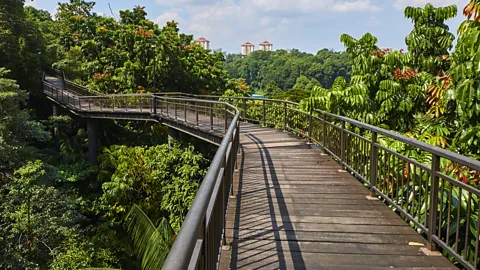
4. Singapore
Singapore’s sustainability journey is legendary, kicking off in 1967 when then-Prime Minister Lee Kuan Yew mooted his “city in a garden” vision. Following more than 50 years of mindful urban development – including the creation of more than 300km of green corridors as part of the city-state’s Park Connector Network – Singapore became the world’s first entire nation to receive sustainable destination certification from the Global Sustainable Tourism Council, in 2023. The certification reflects the Southeast Asian nation’s commitment to its Singapore Green Plan 2030 goals for sustainable development, which includes quadrupling solar energy deployment by 2025, reducing the waste sent to landfill by 20% by 2030, and limiting the registration of new cars to cleaner-energy models from 2030.
Locals and visitors continue to reap the benefits, with new and upcoming attractions including the 24km hiking-biking Rail Corridor (due to fully open in 2024) and the enhancement of 13 southern parks, along with two new trails on the Coast to Coast Trail network. Singapore is also set to welcome seven new MRT (metro) stations on the Thomson-East Coast Line in early 2024.
Opened in 2023 with cutting-edge initiatives (including a biodigester that transforms food waste into cleaning water), the Green Mark Platinum-certified Pan Pacific Orchard joins the Parkroyal Collection Pickering, a “hotel in a garden”, as an innovative low-impact accommodation option for visitors.
5. Belfast, UK
The UK’s tourism industry remains the strongest supporter of the Glasgow Declaration on Climate Action in Tourism launched at COP25 in 2021, with 172 signatories compared to the US in second place with 73. Among the UK cities making the biggest strides towards a sustainable future is Belfast, which in 2023 jumped from 47th place in the Global Destination Sustainability Index into the top 11 within 18 months. The Northern Ireland capital is now being held up as a blueprint for excellence in a white paper published by Edinburgh-based sustainability certification organisation Green Tourism.
Since the 2021 launch of its Belfast Resilience Goal targeting an inclusive, zero-emissions, climate-resilient economy within a generation, the city has seen more than 90 hotels, attractions and restaurants committed to sustainable tourism through Visit Belfast’s internationally recognised Green Tourism program (up from five in 2021), with 75% of Belfast hotel rooms now holding a sustainability certification (up from 25% in 2021).
Popular Green Tourism-certified attractions include the Titanic Belfast museum, which aims to be a zero-waste organisation by 2030, and the neighbouring Titanic Hotel Belfast, created in the former headquarters of Harland and Wolff, builders of the RMS Titanic. With more than 50 docking stations, Belfast Bikes offers an easy, green local transport option.
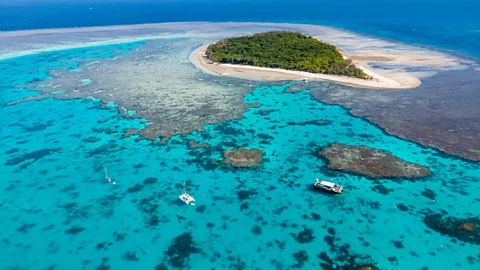
6. Southern Great Barrier Reef, Australia
Approximately 90% of the two million annual visitors to the Great Barrier Reef stick to the sultry northern hubs of Cairns and Townsville. Yet, some of the most rewarding and low-impact opportunities to experience this 2,300-km-long ecosystem occur in the Southern Great Barrier Reef.
Rehabilitated from a guano-mined coral cay left to feral goats, the manta ray haven of Lady Elliot Island at the reef’s southern tip is now one of Australia’s foremost eco-resorts, run almost entirely on renewable energy. Just 40km to north-east as the crow flies, uninhabited Lady Musgrave Island provides a wild backdrop for day trips and overnight glamping experiences with Lady Musgrave Experience, which holds Advance Ecotourism and Climate Action certifications from Ecotourism Australia. Tours operate from the region’s key mainland port of Bundaberg, which received sustainable destination certification in 2023, also from Ecotourism Australia. Its state-of-the-art Mon Repos turtle education centre runs ranger-led turtle viewing tours during the nesting and hatching season (November to March), while recently launched Taribelang Bunda Tours offers opportunities to connect with ancient sustainability practices on Indigenous-guided experiences.
The relaxed agricultural region also offers a smorgasbord of farmgate and cellar door experiences including the Bundaberg Rum Visitor Experience, which in 2023 became the first tourism operator in Australia to achieve Ecotourism Australia’s new Sustainable Tourism Certification.
7. Panama, Central America
Costa Rica has carved out a reputation as Central America’s leader in sustainable tourism, and now neighbouring Panama – which in 2023 granted legal rights to turtles – is stepping into the limelight as a community-based tourism pioneer. Despite Panama’s diverse array of Indigenous cultures (accounting for approximately 14% of the population) and rich biodiversity, the nation’s tourism has traditionally centred on its famed canal and sultry capital Panama City.
Now, visitors can explore Panama’s lush rainforests and palm-fringed islands more meaningfully with the people who know it best: Indigenous and rural communities. The recently launched SOSTUR digital portal lets visitors book local-guided adventures in regions largely untouched by tourism, from visiting the Naso (also known as Teribe) communities who have lived in the jungles of north-western Panama since before Spanish colonists arrived, to learning about the legends of the warriors and guardians of Dekö island from an Indigenous Ngöbe guide.

The portal is part of the Panamanian government’s US$301m Sustainable Tourism Development Master Plan, which runs through 2025. It’s main goal? To grow visitor numbers in a way that prioritises people and nature.
8. Maui, United States
The horror of the wildfires that ravaged the Hawaiian island of Maui in August 2023, claiming at least 115 lives, destroying more than 2,200 buildings and homes and uprooting thousands, was felt around the world. In the days following the tragedy, many Hawaiians told tourists to stay away. But with restaurants, hotels and tour operators since forced to lay off workers and unemployment rates surging, officials are now asking people to return responsibly.
Given the extensive devastation on the north-western side of the island, the Hawai’i Tourism Authority (HTA) reports that Lāhainā will remain closed to the public until further notice, and recommends checking accommodations in the nearby communities of Kā’anapali, Nāpili and Kapalua for availability before visiting. The island’s wilder east side, meanwhile, remains ripe for exploration. Embark on the Road to Hana, a 103km road trip that takes in a sublime stretch of coastline fringed by wild beaches, picturesque waterfalls and lush trails; bring a torch for a self-guided tour of the Hana Lava Tubes near road Marker 31. Near Hana, explore the “alien” forest of Hosmer Grove in in Haleakalā National Park. Travellers can search for local businesses to support on the Maui Nui First website.
9. Greenland
Long overshadowed by the ground-breaking sustainable tourism initiatives of the lower Nordic nations, Greenland is increasingly also taking steps to safeguard its icy territory – and its growing tourism industry – as it navigates its future on the frontline of the climate crisis. Nuuk became the world’s first capital city to be certified by EarthCheck as a sustainable tourist destination in 2020. In 2022, Visit Greenland announced the cessation of its support for conventional cruise tourism on sustainability grounds, and in 2023, Visit Greenland invited the tourism industry to support a shared pledge towards more sustainable and responsible tourism development.
As the nation prepares to welcome a new international airport in Nuuk in 2024, operators are urged to support the pledge’s five themes, spanning the support of local products to creating unique opportunities for tourists to visit throughout the seasons.
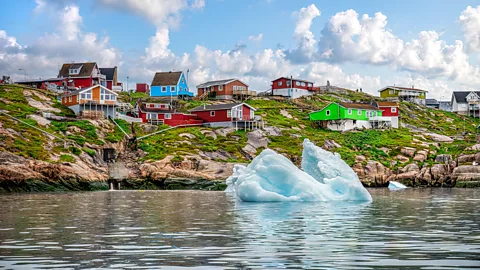
After banning future oil and gas exploration in 2021, Greenland is now focused on rolling out renewable energy, with government-run energy company Nukissiorfiit working towards producing 100% green energy by 2030. Expected to save 127 tonnes of CO2, the churches of Nuuk will be powered by green energy in 2024.
Encouraging tourism beyond the capital is the excellent Icefjord Centre in Illulissat, due to welcome a new airport of its own in the coming years. Supporting sustainable local industries can also have a big impact in this island nation: try a musk ox burger, and look for the “Authentic Nunavut” sticker certifying Nunavut Inuit-made crafts.
10. Dominica, Lesser Antillies
In the wake of the category-five hurricane that devastated the small Caribbean island nation in 2017,
Dominica’s prime minister announced plans to make Dominica “the world’s first climate-resilient nation“. While the development of early-warning systems and resilient housing is now helping to safeguard residents, a new kayaking trail is helping to promote the island – already home to the Caribbean’s longest hiking trail – as a sustainable tourism destination.
Hugging the island’s dramatic west coast for more than 60km, the Waitukubuli Sea Trail is the Caribbean’s first dedicated sea kayaking route. It runs south to north along the island’s western coastline, taking in welcoming communities, secluded beaches, dramatic scenery and local cuisine. The trail is the brainchild of long-time Caribbean Peace Corps worker Wes Moses, who opened Soufriere Outdoor Centre on the island’s south-west coast in 2022 after settling in Dominica in 2018. He’s also joined forces with coastal lodgings to create a network of accommodations along the trail’s 14 sections, with land-based hiking excursions and cultural experiences to enjoy along the way.
Not far from the trailhead at Scott’s Head, Coulibri Ridge, the island’s newest eco-resort, offers a luxurious base to kick-start your kayaking adventure.



